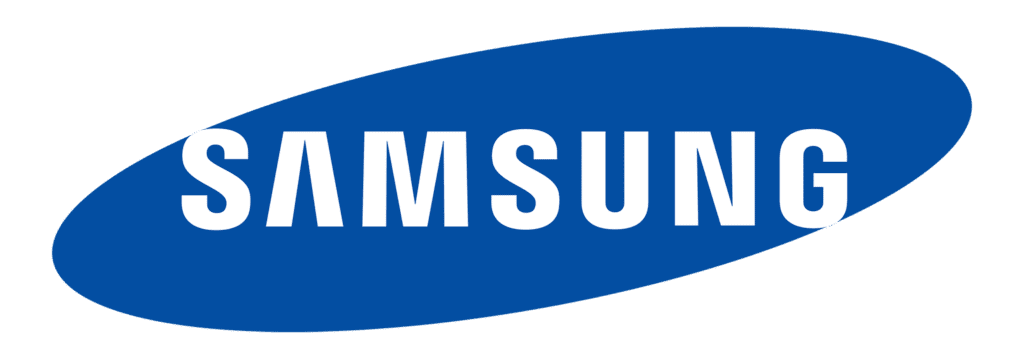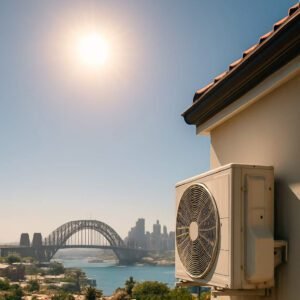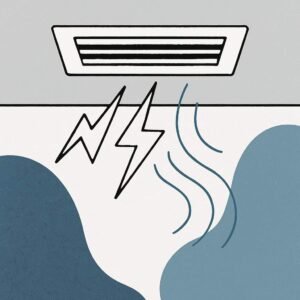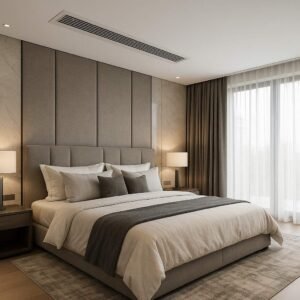Ultimate Guide to Air Conditioning in Sydney. Part 2
Installation, Maintenance & Best Systems by Air Cooling
Air Conditioning Installation Sydney






5. Recommended Air Conditioning Brands and Their Strengths
Air Cooling works with only the best air conditioning brands in the industry – manufacturers that have proven performance, reliability, and great support in Australia. We particularly recommend Daikin, Mitsubishi Electric, Fujitsu, Panasonic, and Samsung for residential air conditioning in Sydney. Each of these brands offers quality systems with unique strengths. Here’s a closer look at why they stand out:
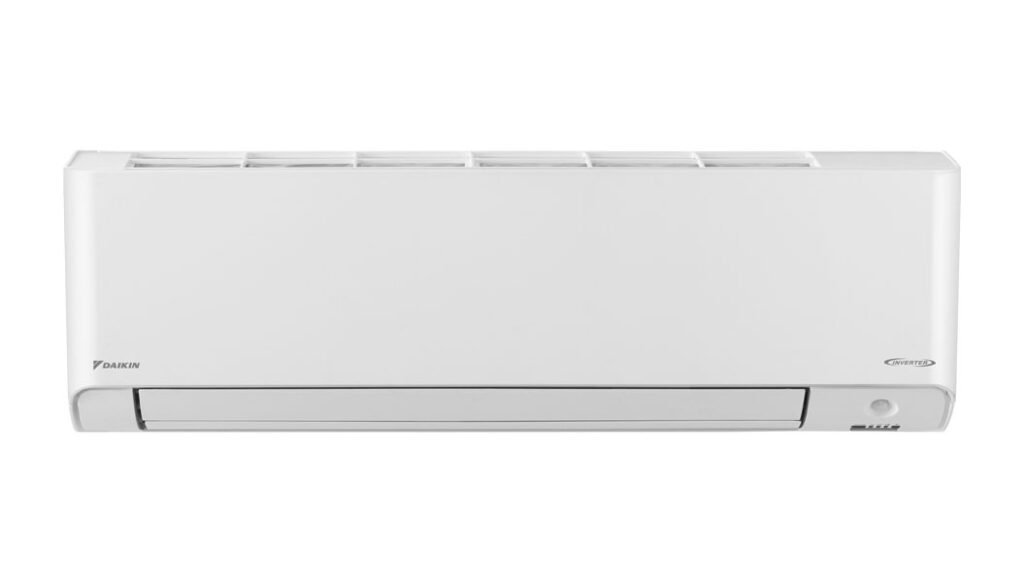
Daikin
Daikin is often considered the global leader in air conditioning technology. This Japanese brand has built a stellar reputation for reliability and advanced performance over decades. Daikin systems are known for their superior energy efficiency, whisper-quiet operation, and excellent cooling performance even on the hottest days. They invest heavily in innovation – Daikin introduced features like smart inverter control for precise temperature holding, and many models have built-in humidity control which is great for Sydney’s muggy summers. While Daikin units can be on the premium end price-wise, you’re paying for top-notch quality. They also use eco-friendly refrigerants and design systems with sustainability in mind. A bonus: Daikin has a large presence in Australia, meaning spare parts and support are readily available. Many homeowners and professionals alike regard Daikin as a gold standard for reliability (it’s not uncommon for a Daikin split to last 15+ years with good maintenance).
Mitsubishi Electric
Mitsubishi Electric (not to be confused with Mitsubishi Heavy Industries, which is a separate brand) is another top-tier Japanese manufacturer. Mitsubishi Electric air conditioners excel in delivering quiet comfort and smart energy-saving features. They often incorporate advanced air filtration/purification systems – for instance, some models include Plasma Quad or anti-allergen filters which can neutralize odors, bacteria, and allergens in your indoor air. These units also typically have built-in Wi-Fi or optional adapters for smart control, and they integrate well with home automation systems. A key strength of Mitsubishi is durability; their units are engineered to last and perform in tough conditions. Many Sydney customers praise Mitsubishi Electric splits for their “set and forget” reliability and very low noise – you might hardly notice it’s on except that your room is perfectly comfy. They also have nifty features like “i-save” memory (which recalls a preferred setting with one button) and dual barrier coatings on internal parts to repel dust and grease buildup. Overall, Mitsubishi Electric strikes a great balance of efficiency, feature set, and build quality.
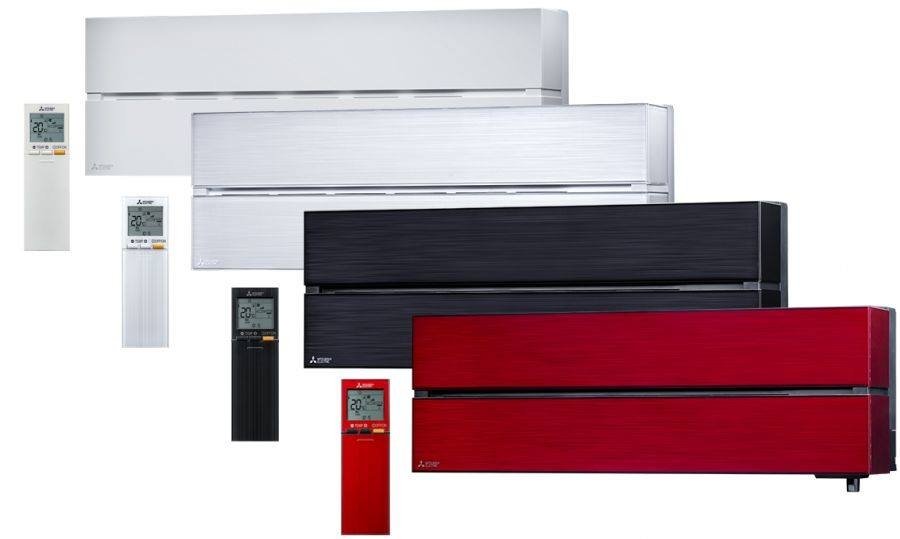
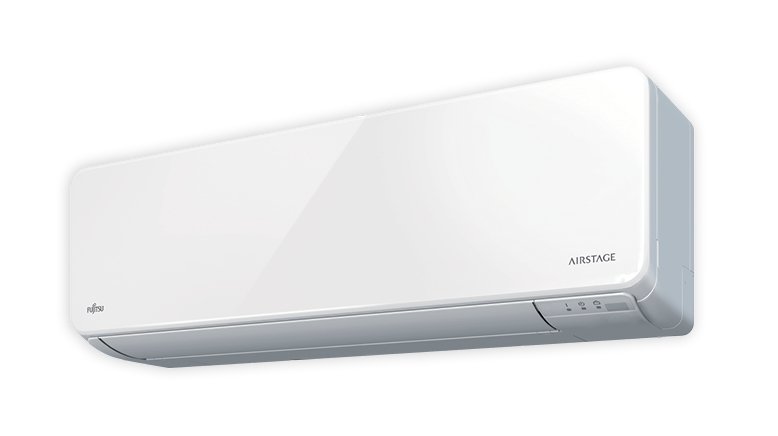
Fujitsu
Fujitsu General is sometimes called “Australia’s Favourite Air” because of the brand’s strong popularity here – and it’s not just a slogan. Fujitsu has been recognized as Australia’s most trusted air conditioning brand for multiple years (2018–2022), reflecting high customer satisfaction. Fujitsu units are known for being user-friendly, reliable, and good value for money. They offer a wide range – from stylish wall-mounted units (including designer series with slim profiles) to floor consoles and ducted systems. One standout feature in many Fujitsu splits is the Human Sensor Control, which can automatically adjust cooling when people leave or enter the room, improving efficiency. They also have an “Economy mode” to trim power usage on milder days. Fujitsu’s focus on comfort is evident: many models ensure stable temperature with minimal fluctuation, and they operate quietly. After-sales support is a strong point as well – Fujitsu has offices and warehouses in Sydney and other major cities, ensuring good parts availability and support technicians, which means if there’s ever an issue, it gets resolved quickly. Price-wise, Fujitsu sits in the mid-range, often making it a cost-effective choice for the quality you get.
Panasonic
Panasonic is a well-established Japanese brand that brings a lot of innovative tech to the table. Panasonic air conditioners are renowned for their air purification technology and intelligent features. Many models come with nanoe™ X air purification systems, which release tiny hydroxyl radicals that inhibit pollutants like bacteria, viruses, mold, and allergens. This is a big plus if indoor air quality is important to you – your AC not only cools but also actively cleans the air. Panasonic units also feature AEROWINGS, a twin vane system that optimizes airflow for faster cooling when you need it and a shower cooling effect to distribute air evenly without blasting directly on occupants. Energy efficiency is another strength – Panasonic invests in high-efficiency compressors and sensors that detect human activity and adjust output. They have a robust range of smart-ready models with built-in Wi-Fi control and compatibility with voice assistants. In terms of build, Panasonic ACs are built to handle tough conditions, and they often tout their reliability in various climates (they’re sold globally in very hot and very cold regions). They tend to be priced competitively, sometimes a bit lower than Daikin/Mitsubishi, which means you can get a high-end feature set at a slightly more accessible price. Panasonic’s reputation for electronics carries over into their AC – expect a modern, feature-rich unit that’s also durable.
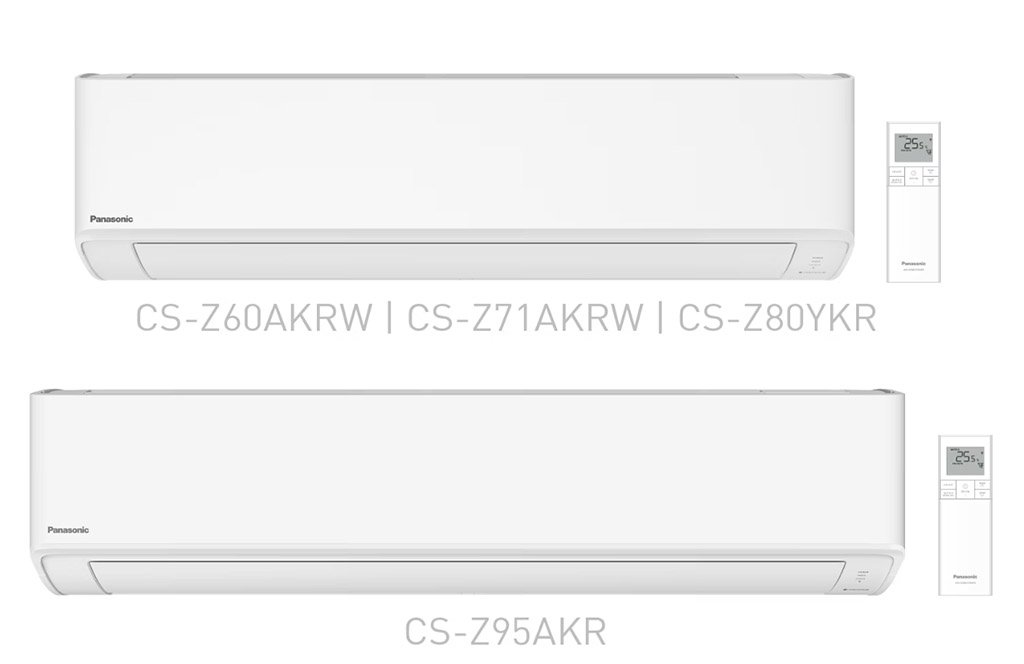
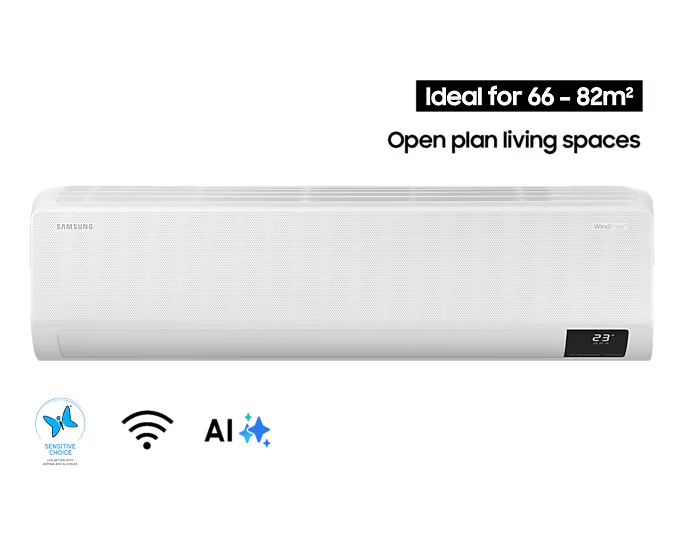
Samsung
Samsung, the well-known South Korean brand, has made significant strides in the air conditioning arena by focusing on smart technology and sleek design. Samsung air conditioners come loaded with innovative features – for example, their newer split systems include Wind-Free cooling (which disperses air through micro-holes to cool a room evenly and gently with no direct draft) and built-in Wi-Fi with AI capabilities. A Samsung AC can learn your usage patterns and cooling preferences over time, automatically adjusting to keep you comfortable while optimizing energy use. These units also typically have high-performance filters (like tri-care filters) for capturing dust and allergens, and some models even have an auto-clean function to dry out the coil and prevent mold. Samsung’s designs are often more style-forward – slim indoor units, touch display panels, etc., which can be a plus for those who want the AC to blend into modern decor. They offer a good range of capacities suitable for homes and have both split and ducted solutions. They also have a strong warranty and support infrastructure in Australia. On the flip side, while very feature-rich, Samsung units can be a tad more affordable than some Japanese counterparts, which makes them an attractive option if you want lots of tech without a premium price.
Summary:
All these recommended brands come with comprehensive warranties (typically 5 years parts and labor, as standard in Australia) and a track record that Air Cooling trusts. We are experienced in installing and servicing each of these brands, so we can give unbiased advice on which might suit your situation best. For instance, if you prioritize absolute quiet and top efficiency, we might steer you towards a Daikin or Mitsubishi Electric. If you want advanced air purification, Panasonic could be a winner. For tech enthusiasts who love smart home integration, Samsung might excite you. And if you’re after solid performance and value, Fujitsu is always a safe bet.
Rest assured, any of these brands will deliver reliable cooling for your home – we’ve simply highlighted their unique strengths. Air Cooling can supply and install your chosen unit as an authorized dealer, ensuring you get genuine products with full warranty support. No matter which brand you pick, pairing it with our professional installation will ensure it operates at peak performance and efficiency.
6. Maintenance Tips and Best Practices for Your AC System
Once you have your air conditioning system up and running, it’s important to keep it well maintained. Regular maintenance not only keeps your AC operating efficiently (saving you money on power bills) but also extends its lifespan and ensures healthy air quality in your home. Here are some maintenance tips and best practices for your air conditioning system in Sydney:
Clean or Replace Air Filters Regularly:
The simplest yet most impactful maintenance task is taking care of your AC’s air filters. For split and multi-split systems, the indoor unit has removable filters (usually behind the front grille) that capture dust. For ducted systems, there is often a return-air filter grille in the ceiling. Check and clean these filters about once a month during heavy use (e.g. peak summer) and every 2-3 months in milder periods. A clogged filter restricts airflow, making your AC work harder and less effectively. To clean a reusable filter, gently vacuum off the dust or wash it with lukewarm soapy water and let it dry completely before reinserting. If your system uses disposable filters or more advanced HEPA filters, replace them as recommended (usually every 6-12 months). Keeping filters clean can improve efficiency by 5-15% and maintain good airflow and air quality.
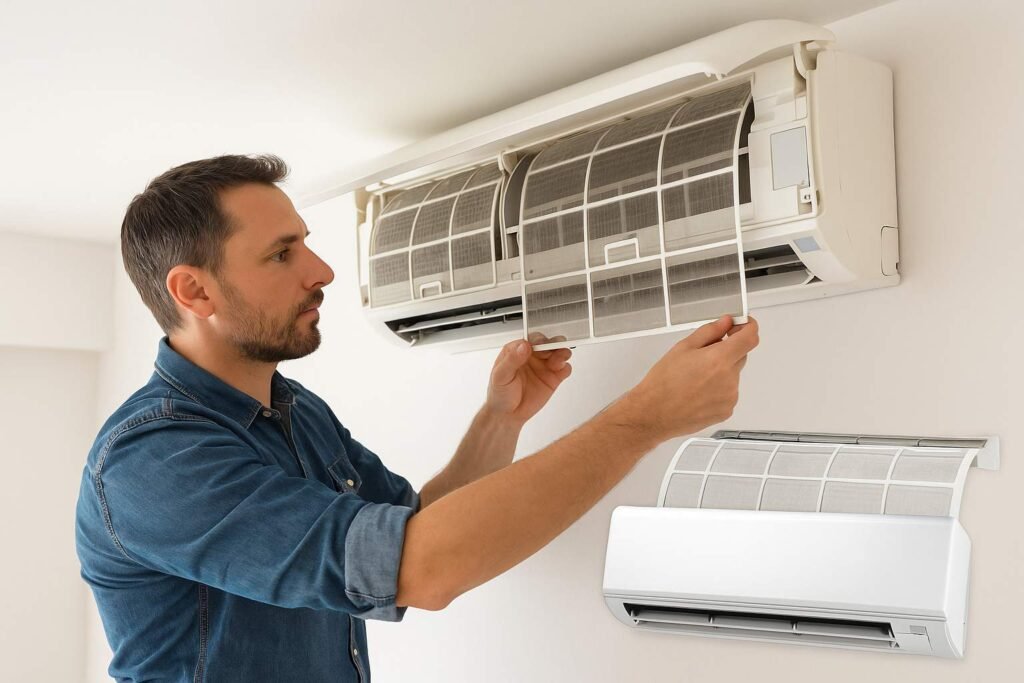
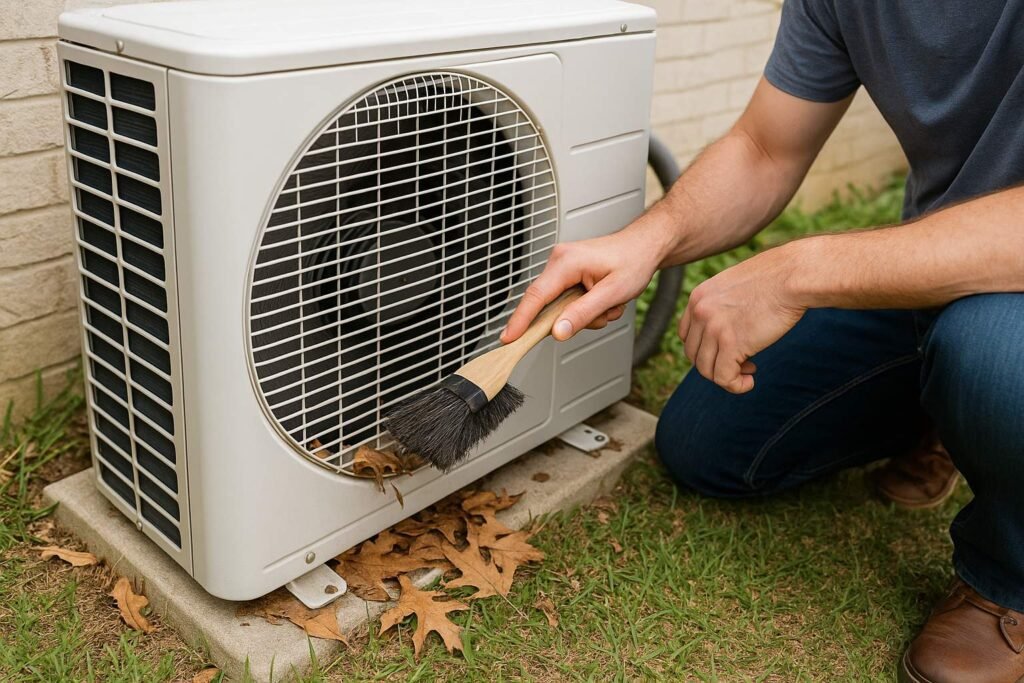
Keep the Outdoor Unit Clear:
The outdoor condenser unit (for splits and ducted systems) needs good airflow to dump heat outside. Make sure there’s no debris, leaves, or obstructions around the outdoor unit. Every few months, especially after autumn leaf fall or any storms, inspect around the unit. Clear away any leaves, dirt, or rubbish. Also trim back any shrubs or plants so there’s at least 30-50 cm of clear space on all sides. The coil sides of the outdoor unit can be gently hosed down with low-pressure water to remove dust and dirt (turn off power first). Ensure the fan and coil fins are free of grime – a clean outdoor unit helps the AC cool efficiently. In Sydney’s coastal areas, salt buildup can be an issue; rinsing the outdoor unit with fresh water occasionally can prevent corrosion from salt air (some units have special anti-corrosion coatings, which help). Never cover the outdoor unit completely when in use, and if covering in off-season, use a breathable cover to avoid moisture buildup.
Check for Unusual Sounds or Odors:
Pay attention when your system is running – if you notice strange noises (grinding, squealing, rattling) or unpleasant odors coming from the indoor unit or vents, don’t ignore them. These can be early signs of issues: rattling might indicate a loose part or debris in the blower, squealing could mean a worn fan belt or motor bearing (more common in ducted systems), and musty odors might suggest mold growth inside (possibly from a clogged drain or dirty coil). If basic cleaning (like filter cleaning) doesn’t resolve a smell, it’s time to call a professional. Air Cooling can do a deeper clean of coils and treat for mold if needed. Addressing small signs early can prevent bigger breakdowns later.
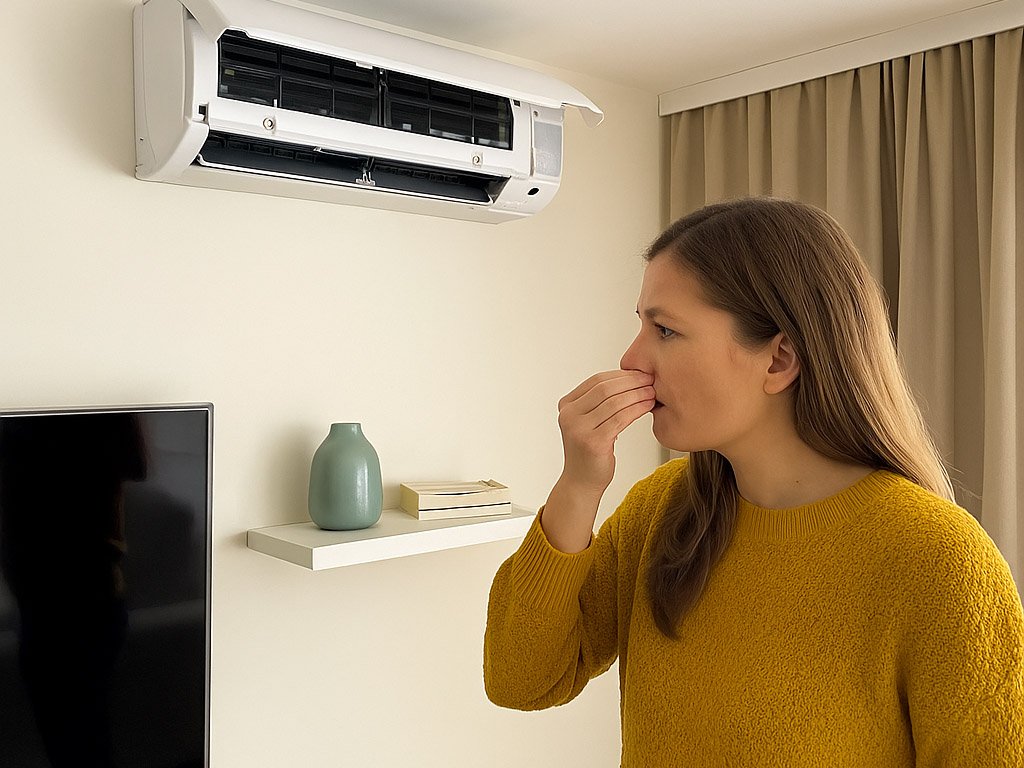
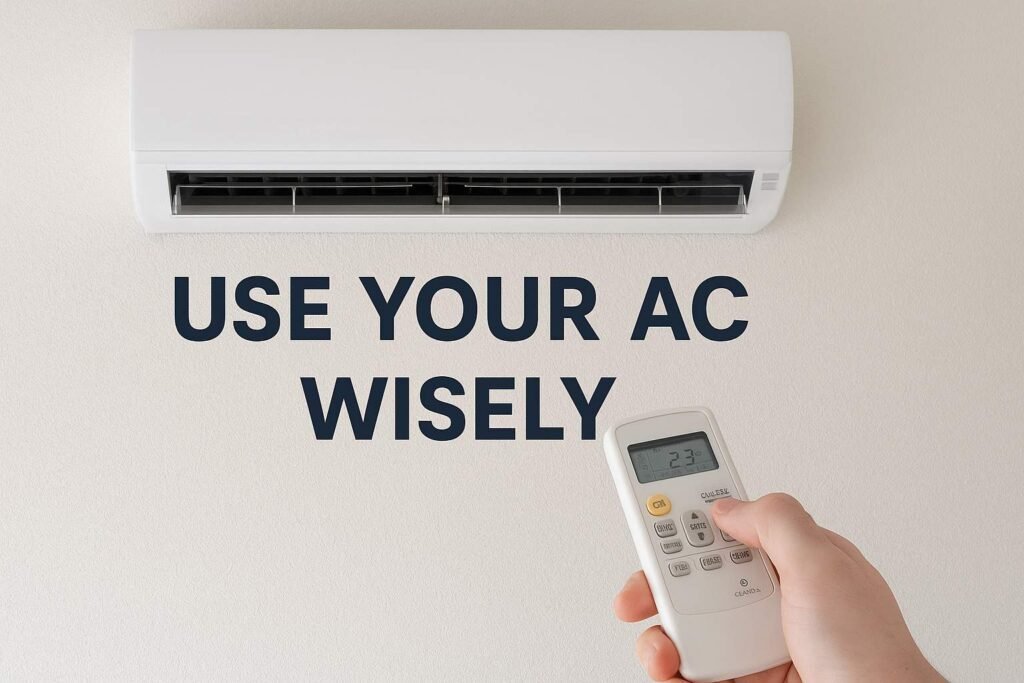
Use Your AC Wisely:
Operational habits can also impact maintenance. Avoid running your AC 24/7 non-stop on extreme settings; give it periodic breaks and use the thermostat effectively (set a reasonable temperature, like 24–25°C in summer, rather than 18°C, which reduces strain). Utilize the timer function or smart controls to turn the AC off when not needed (some systems even let you schedule off times or use motion sensors to adjust usage). It’s also a good practice to run your AC in fan-only mode for about 15-30 minutes occasionally, or at the end of a cooling session – this helps dry out the inside of the indoor unit so mildew doesn’t grow. Many modern ACs do this automatically (some have a “dry coil” function after you turn it off). In winter, you might run the AC on heating occasionally to ensure everything stays lubricated. Using economy or sleep modes at night can save energy and lightly reduce wear on components.
Check the Condensate Drain:
All refrigerated air conditioners produce condensate (water) when cooling, which should drain away via a pipe. If this drain gets blocked (by algae, dirt, or kinks), water can back up and leak from the indoor unit – not a fun surprise on your wall or ceiling. Periodically check that the condensate drain (a small PVC pipe coming from the indoor unit to outside or to a plumbing outlet) is clear. Ensure the outlet is not blocked by dirt. If you notice water dripping where it shouldn’t, or any error codes related to drainage, turn off the system and get it serviced. You can prevent blockage by having the drain line flushed during annual maintenance.
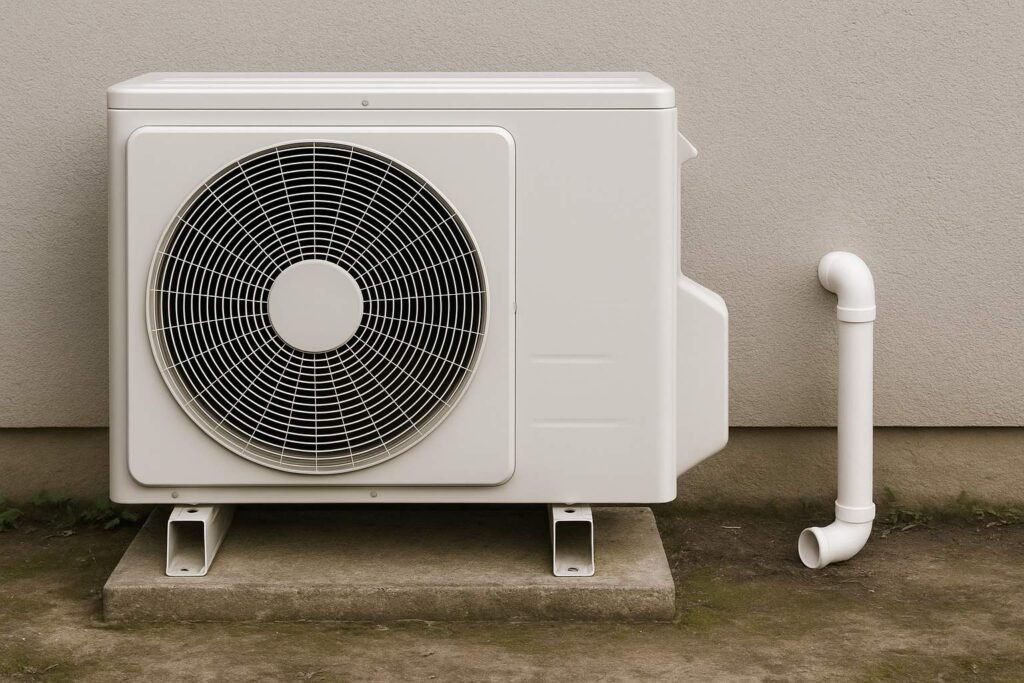
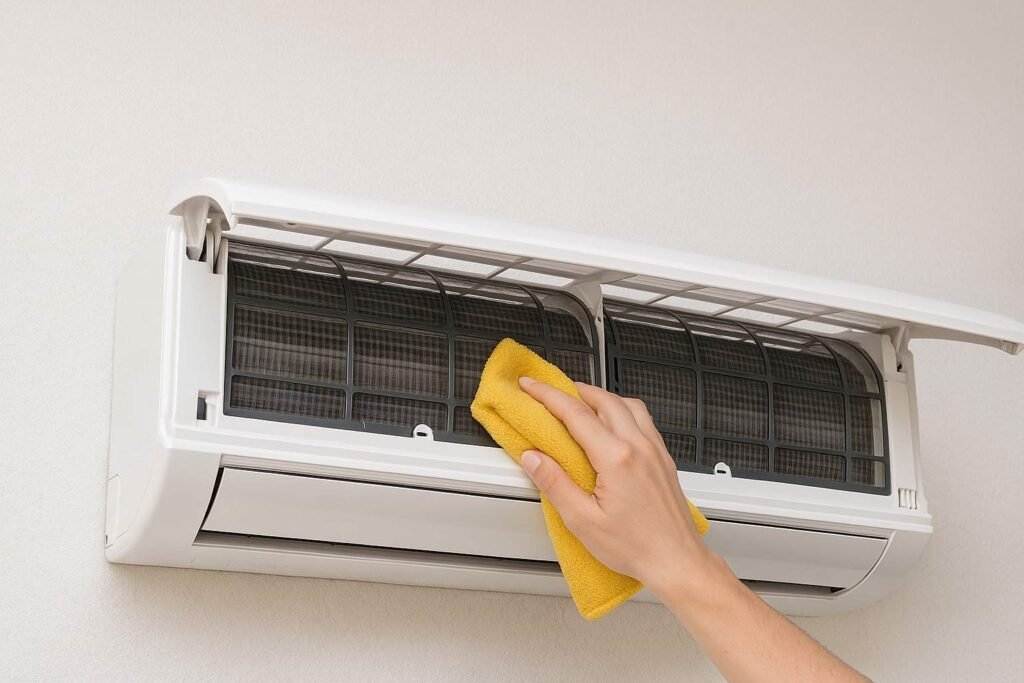
Keep Vents and Indoor Units Clean:
Aside from filters, dust can accumulate on the vents of a ducted system or the coils of an indoor unit. Wipe down the return air grille and supply vents of ducted systems every so often to remove dust. For wall units, use a soft cloth to dust off the top and front (when the system is off). Ensure nothing is blocking the airflow of indoor units – for example, don’t push a big wardrobe or install shelving right in front of a wall unit, and don’t cover vents with furniture. Good airflow ensures the AC doesn’t overwork.
Schedule Annual Professional Servicing:
While DIY upkeep goes a long way, you should have your air conditioner professionally serviced at least once a year. The ideal times are spring (to prep for summer) or autumn (after heavy summer use). During a professional maintenance visit, an Air Cooling technician will perform tasks like: deep cleaning the indoor evaporator coil and outdoor condenser coil, checking refrigerant gas pressure and topping up if needed, tightening electrical connections, lubricating moving parts (if applicable), testing capacitors and thermostats, and verifying overall system operation. We’ll also flush the drain lines and ensure there are no refrigerant leaks. Regular servicing keeps your system running at peak efficiency and catches any wear-and-tear issues early. Considering the energy savings and extended equipment life, annual maintenance is well worth it – not to mention most manufacturer warranties require regular maintenance for validity. Typically, a standard service in Sydney might cost in the range of $150–$250 for a split system (and a bit more for ducted), which easily pays for itself by preventing major repairs.
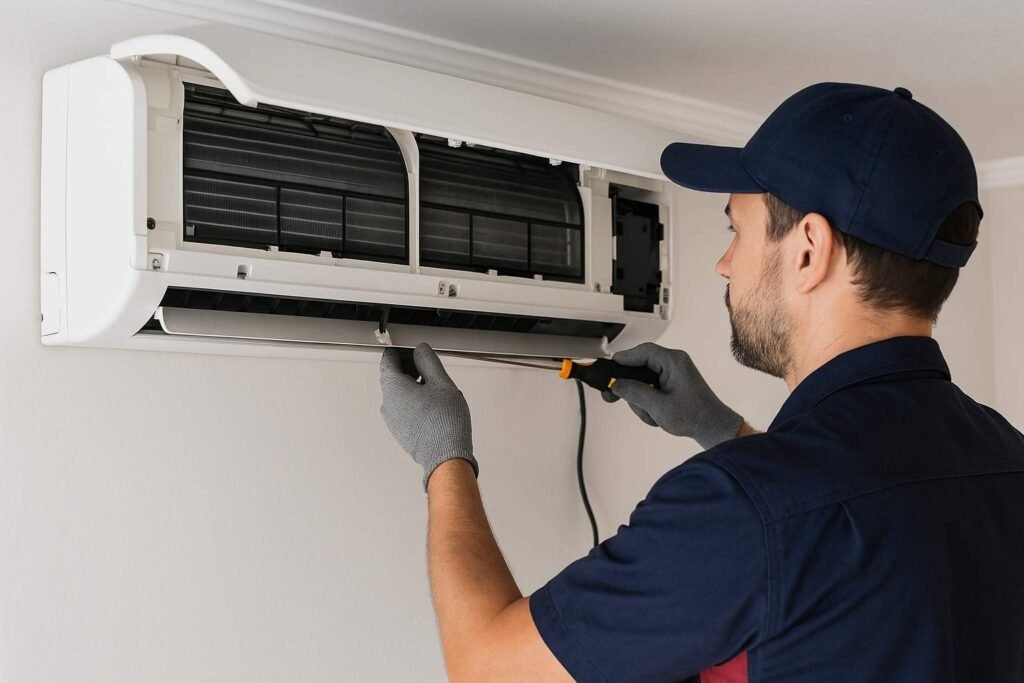
By following these maintenance best practices, you’ll ensure that your air conditioning system continues to perform optimally through many Sydney summers (and winters). Not only will your home stay comfortable, but you’ll also avoid those situations where the AC fails right on the hottest day of the year – preventative care greatly reduces the chance of breakdowns. Air Cooling offers tailored maintenance plans where we handle all the above for you on a scheduled basis, taking the guesswork out of upkeep. Whether you DIY some tasks or leave it entirely to us, remember that a well-maintained air conditioner will use less energy, cool more effectively, and last significantly longer than one that’s neglected.
Benefits of Regular Air Conditioning Servicing
 Lower energy bills thanks to improved efficiency
Lower energy bills thanks to improved efficiency
 Longer system lifespan by reducing wear and tear
Longer system lifespan by reducing wear and tear
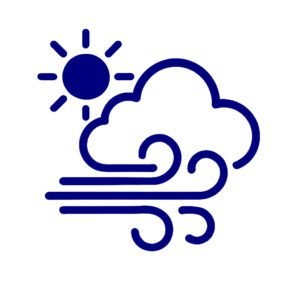 Better air quality with clean filters and components
Better air quality with clean filters and components
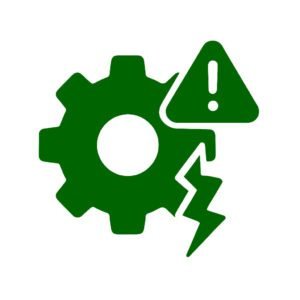 Fewer unexpected breakdowns during peak seasons
Fewer unexpected breakdowns during peak seasons
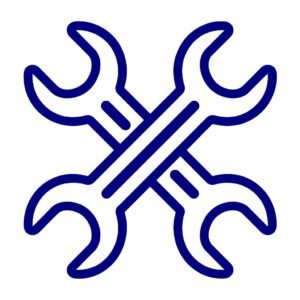 Compliance with manufacturer warranties
Compliance with manufacturer warranties
7. Signs Your Air Conditioning System Needs Repair
Even with good maintenance, you should be aware of warning signs that indicate your air conditioning system may need professional repair. Catching a problem early can often prevent a small issue from turning into a costly breakdown. Here are some common signs that your AC needs repair (or at least a check-up):
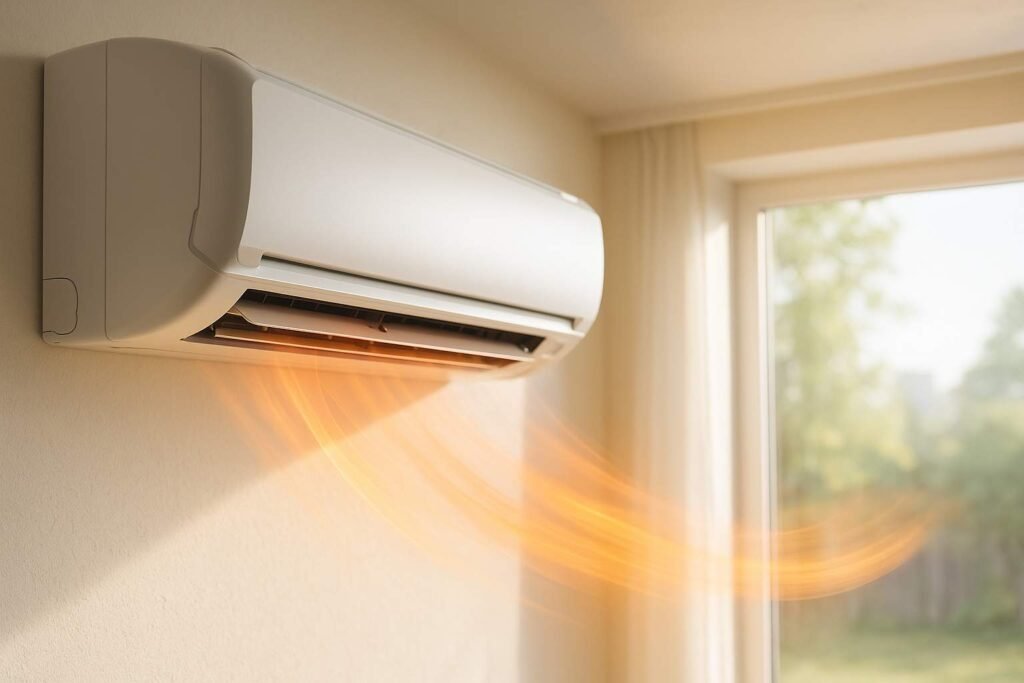
Blowing Warm or Weak Air:
If you set your AC to cool and notice that the air coming out isn’t very cold – or the airflow from the vents is much weaker than normal – that’s a red flag. Lack of cold air could mean the refrigerant level is low (possible leak) or there’s an issue with the compressor. Weak airflow might indicate a failing blower fan, a clogged coil, or ductwork problems (for ducted systems). In either case, if basic things like filter cleaning don’t solve it, get a technician to diagnose the cause. Your system should be able to bring the room down to the set temperature; if it’s struggling to do so, something’s not right.
Unusual Noises:
Air conditioners generally hum and whoosh (from airflow), but sudden new noises are a sign of trouble. Listen for things like: grinding or metal-on-metal screeching (could be a motor or bearing issue), loud rattling or banging (a loose part or fan blade could be hitting something), hissing or bubbling (might indicate a refrigerant leak or expansion valve issue), or constant clicking (perhaps a relay or control problem). Don’t ignore these sounds. For example, a grinding noise in a ducted fan motor could worsen and burn out the motor if left running. It’s best to turn off a noisy unit and have it inspected.
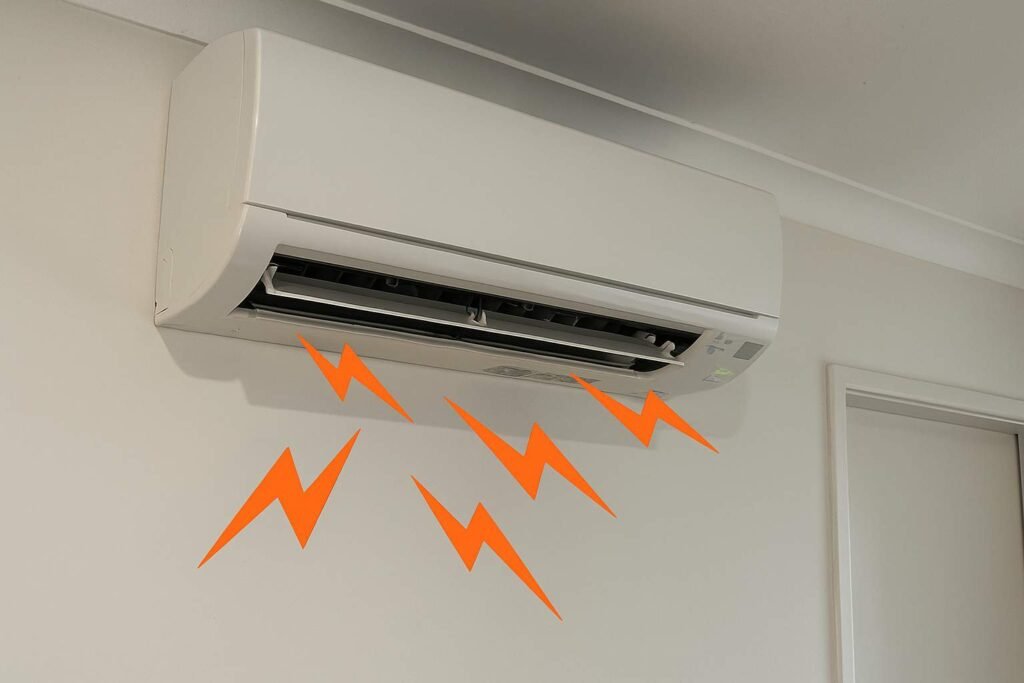
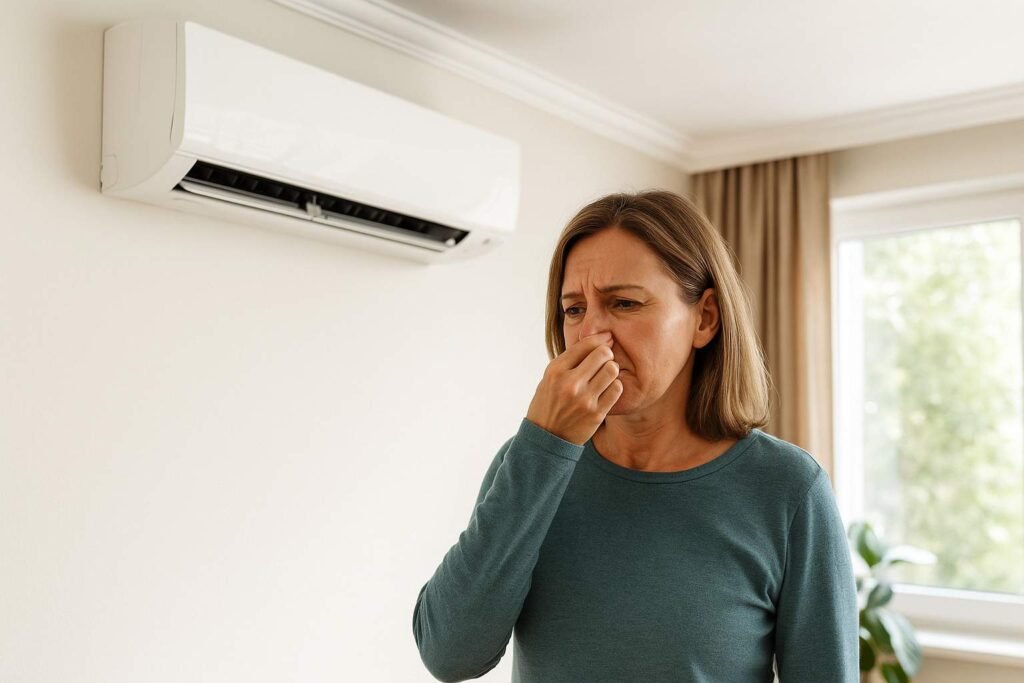
Bad Odors or Musty Smell:
If you smell foul or musty odors when the AC is running, it’s likely a sign of mold or mildew growing within the system or ductwork. This can happen if moisture is not draining properly or after periods of little use in a humid environment. A “dirty sock” smell is actually a known syndrome in AC units caused by bacterial growth on coils. Alternatively, a burning smell could indicate an electrical problem or an overheating component. Do not ignore smells – they can affect your indoor air quality and potentially your health. An HVAC professional can clean the system internally, disinfect coils, or fix electrical issues depending on the cause.
Frequent Cycling or Constant Running:
Your AC should cycle on and off to maintain the set temperature. If it’s turning on and off too frequently (short cycling) or running almost constantly without shutting off, something may be wrong. Short cycling can be caused by an oversized unit, a thermostat issue, or an overheating compressor. A unit that never cycles off might be undersized, low on refrigerant, or struggling due to dirty components. Both situations are inefficient and indicate the system isn’t functioning as intended. It’s worth having a technician investigate to avoid unnecessary strain on the system.
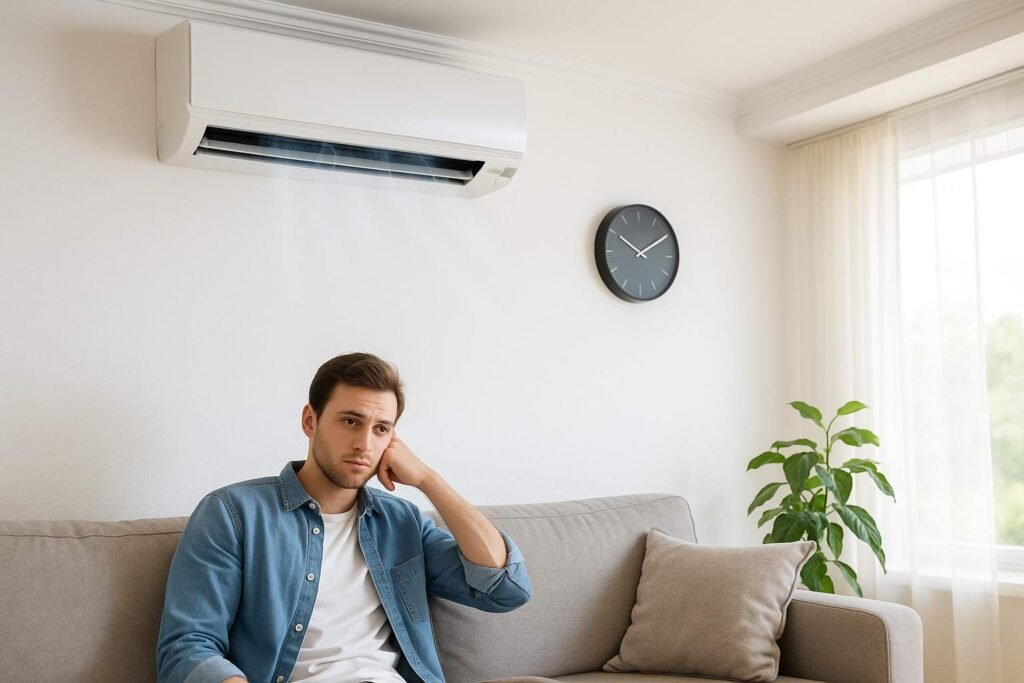
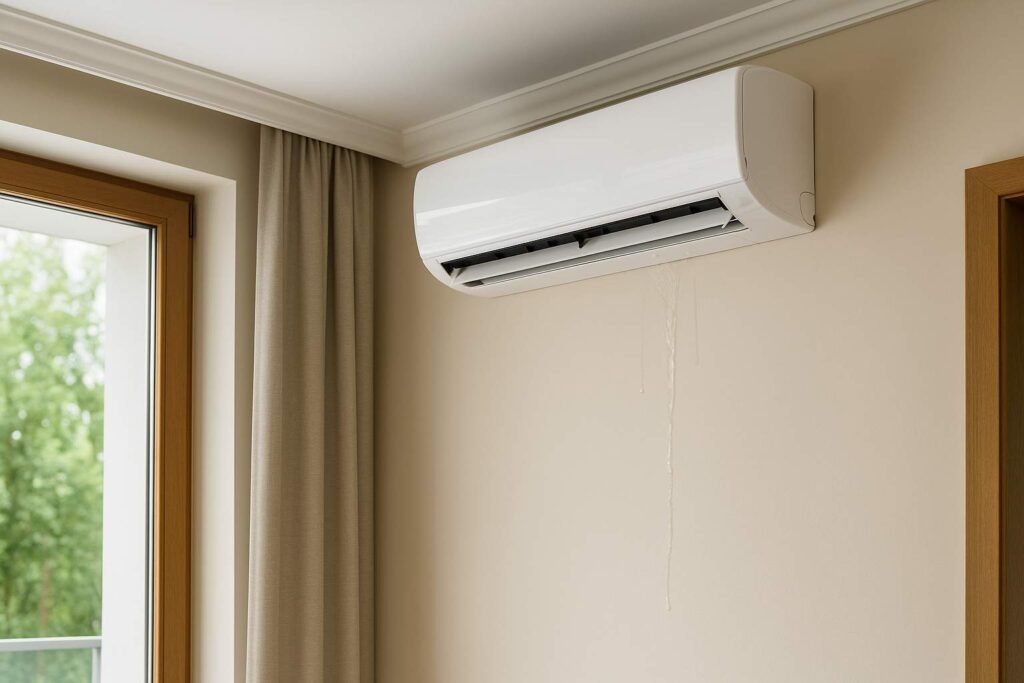
Leaking or Excess Moisture:
It’s normal for the outdoor unit to drip water when running (from condensate) and even for the indoor unit’s drain pipe to expel water. However, you should never see water pooling around your indoor unit or water stains on walls/ceilings near a duct or split system. That means a drainage problem. Likewise, any sign of oily residue on or around the outdoor unit could mean a refrigerant leak (refrigerant is often mixed with a light oil in the system). If you suspect a refrigerant leak – perhaps the unit lost cooling power and you see oily wet spots – call for service promptly, as refrigerant is the lifeblood of your AC and leaks need professional repair and recharge. Another fluid to watch for is if your outdoor unit (or indoor for that matter) is freezing up (ice on the coils) and then dripping excessively when it melts – this is a sign of a problem (commonly low refrigerant or poor airflow) and should be addressed.
Higher Energy Bills with Same Usage:
If you notice a significant jump in your electricity bill that doesn’t align with any change in your AC usage or a known rate increase, it could be that your AC has lost efficiency and is laboring. Maybe a part like a compressor is deteriorating or there’s a refrigerant issue causing it to run longer to achieve the same cooling. A tune-up might identify an underlying problem that, when fixed, can restore efficiency and bring your power consumption back in line.
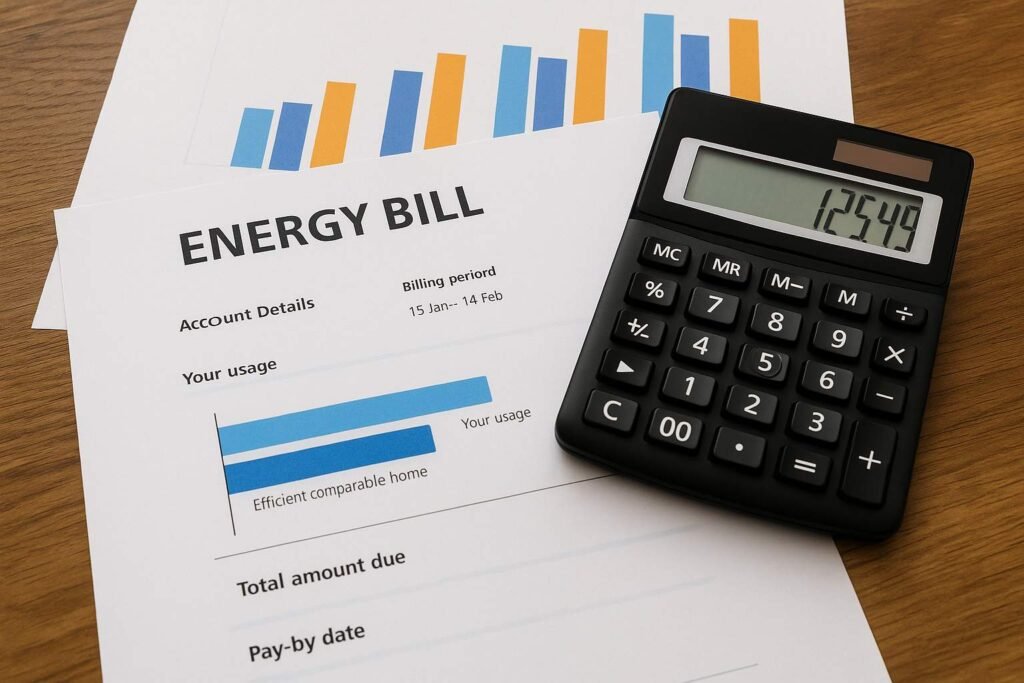
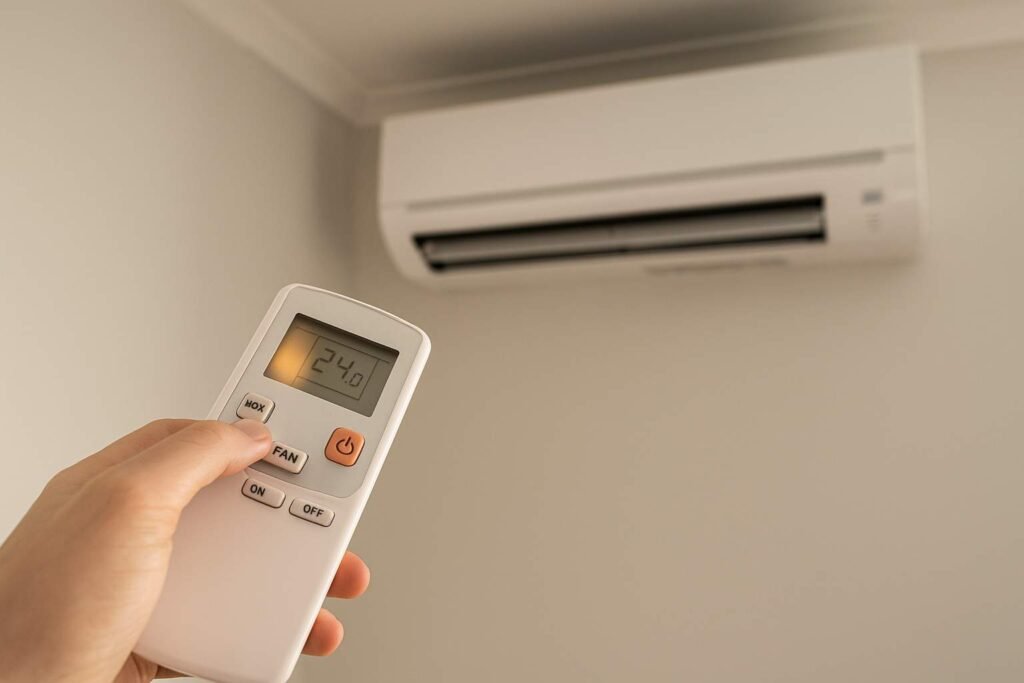
Unresponsive Controls or Error Codes:
Modern systems often self-diagnose. If your unit’s display is flashing an error code or certain lights blinking, check the manual – it’s telling you something (like low refrigerant, sensor failure, etc.). Don’t ignore error codes; they usually mean a component isn’t functioning correctly. Additionally, if your thermostat or remote isn’t responding properly (and it’s not just dead batteries), or the system sometimes doesn’t turn on or off as it should, there could be an electrical/control issue developing.
If you encounter any of these signs, it’s best to contact a professional HVAC technician. Air Cooling’s repair team is equipped to diagnose and fix all these issues and more. We’ll troubleshoot to find the exact cause – whether it’s a worn-out capacitor, a fan motor that needs replacement, a refrigerant leak to be sealed, or just a system in dire need of cleaning. Catching problems early can often mean a simpler repair (e.g. replacing a $50 part) versus waiting until it causes cascading failures.
Remember, an air conditioner typically gives some warnings before a major failure. By paying attention to how your system operates and noting any changes, you can get repairs done proactively. This ensures your AC keeps you comfortable when you need it most, and can also prolong the life of the system by relieving stress from malfunctioning components. If something doesn’t seem right with your cooling, Air Cooling is just a phone call away to restore your system to proper working order.
Why Air Cooling is the best company for your requirements?
 Servicing Sydney with Fast Response
Servicing Sydney with Fast Response
 10+ years experience across Sydney
10+ years experience across Sydney
 Competitive pricing & transparent quotes
Competitive pricing & transparent quotes
 24/7 emergency service
24/7 emergency service
 Licensed & Insured Professionals
Licensed & Insured Professionals
8. General Cost Ranges for Installation and Servicing in Sydney
Budgeting for air conditioning involves understanding both the initial installation costs and the ongoing service expenses. While actual quotes will depend on your specific situation, here are general cost ranges for common air conditioning jobs in Sydney to give you a ballpark:
- Split System Installation (Single Unit): For a typical wall-mounted split system supply and install, expect about $1,200 to $3,500 total for a standard size unit. This range covers smaller 2–2.5 kW units up to larger 7–8 kW units. The unit price itself might be around $600 (for a small basic model) up to $2,000+ (for a premium large model), and installation usually adds about $600 – $1,000 depending on complexity. If the installation is back-to-back (indoor unit on inside wall directly behind where outdoor unit sits outside), that’s typically on the lower end of cost. Longer pipe runs, difficult access (like high-set indoor units or multi-storey), or additional work like installing a new dedicated circuit to the switchboard can push install costs higher. Still, split systems remain one of the most cost-effective to install.
- Multi-Split System Installation: Multi-split costs vary with the number of indoor units (heads) and total capacity. As a rough guide, a multi-split with 2 indoor units might cost around $3,000 to $6,000, while a 4-head system could be $5,000 to $10,000. The outdoor unit for multi-splits is expensive, but you save compared to buying, say, four separate splits. Note that if installation requires extensive refrigerant line runs to each room (especially in a finished home), labor costs can rise. It’s definitely worth getting a quote, as multi-splits can sometimes approach the cost of ducted if many rooms are involved. The benefit is you circumvent duct installation costs. Multi-splits are more niche, so ensure your installer (like Air Cooling) is experienced with them for an accurate cost assessment.
- Ducted System Installation: Ducted air conditioning is the priciest but also the most comprehensive solution. For a small ducted system (e.g. for an apartment or a small 2-3 bedroom single-story house), starting costs are around $5,000 – $8,000 including basic installation. For an average 4-bedroom single-storey home, costs commonly range $8,000 to $15,000 all up. Larger or double-storey homes can see $15,000 to $20,000+ if multiple zones, extra ducts, or higher capacity units are needed. The unit (fan coil + compressor) for ducted might run $5k to $10k alone (depending on brand and capacity), and installation is a big job: cutting vents, laying ducts, possibly upgrading electrical circuits, etc. Complexity factors include whether the home has easy roof access, how many zones/dampers you want, and any custom work (like two-story duct routing or tight roof spaces requiring workaround). Though expensive upfront, remember a ducted can add value to your property and covers the whole house climate in one go.
- Replacement or Additional Units: If you already have a system and are replacing it (like swapping an old split for a new one), costs can be slightly lower if using existing infrastructure (wiring, slab, etc.), but often it’s similar to a new install because the old unit must be safely removed and disposed of. Removal fees for an old unit can be ~$100–$300 if not included. Adding another split unit later in another room will cost similarly to the initial one. Ducted system extensions or modifications (like adding an extra duct/run to a new room) might cost a few hundred dollars per new outlet if the main unit can handle it.
- Operating Costs: While not an installation cost, it’s good to anticipate running costs. A medium-sized (5 kW) split system might cost roughly $0.25–$0.35 per hour to run on cooling, depending on electricity rates and efficiency. Multiply that by hours used to estimate your quarterly bill portion. Ducted systems consume more – perhaps $1.50 – $3.00 per hour if cooling the whole house (less if only a zone or two). Consider these when choosing system capacity and zoning – sometimes spending a bit more on a high-efficiency model will pay back in lower bills.
- Routine Servicing: For maintenance, basic service visits in Sydney typically range $150 to $250 for a residential split system. This would include cleaning filters, coils, checking refrigerant, electrical, etc. Ducted system service might be a bit more, say $250 to $400, as there are multiple zones/vents and a larger system to inspect. If you opt for a yearly service plan with Air Cooling, we often provide a better rate per service or include priority support. Budget for at least one service a year. Some customers do two (pre-summer and post-summer) especially if the AC runs heavily – but one is usually sufficient for most homes. Also factor in small parts replacement during service: e.g., replacing a worn capacitor or a filter might be an extra $50–$100 occasionally.
- Repairs: It’s harder to generalize repair costs because it depends on what fails and if the unit is under warranty. Common minor repairs include replacing capacitors, fan motors, or sensors – these can range from $200 to $600 including parts and labor. Fixing a refrigerant leak and re-gassing might cost $300 to $800 depending on leak location and refrigerant type/amount. More major repairs like a compressor replacement can be very costly ($1,500+), such that sometimes replacement of the whole unit is considered if it’s an older unit. The good news: if you buy quality brands and maintain them, major failures are relatively rare in the first 10-15 years. Many issues, if they occur, will be covered under the manufacturer’s warranty in the first 5 years (parts and labor), so ensure professional installation and keep records of maintenance to uphold warranty.
In summary, an average Sydney homeowner might spend a couple thousand dollars for a single-room AC install, or into the low five figures for a full-home solution. After that, setting aside a couple hundred each year for servicing will keep your system efficient and help avoid large repair bills. It’s also wise to compare quotes and inquire about any promotions or rebates – sometimes there are government incentives for high-efficiency systems or bundle deals (Air Cooling can inform you of any current specials). For example, as of writing, some energy rebate programs exist to encourage upgrading old systems to new efficient ones – these could offset cost if you qualify.
Air Cooling strives to offer competitive pricing for installations and transparent estimates for any service or repair. We understand installing air conditioning is an investment, and we aim to ensure you get the best value in terms of both price and long-term performance. By being informed about cost ranges, you can budget accordingly and make the choice that gives you the comfort you need within your means. If you’re ever unsure, we’re happy to provide obligation-free quotes and answer questions so you can make an informed decision.
Easy 3-Step Air Conditioning Services by Air Cooling
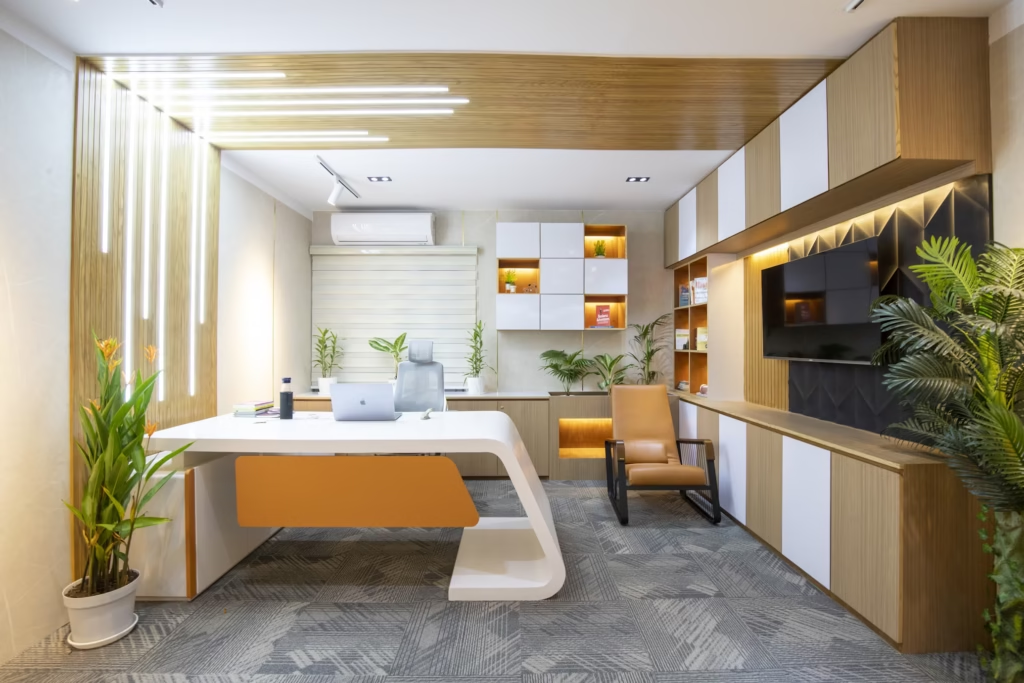
1. Enquire
2. Customized Solution
3. Order & Enjoy
9. Service Areas Covered by Air Cooling
Air Cooling is proud to serve customers all across the greater Sydney region. Our technicians are mobile and strategically based to reach you quickly, no matter which part of the city or surrounding area you call home. Below is an overview of our service areas in Sydney (if you don’t see your area listed, give us a call – chances are we still cover it!):
- Sydney CBD & Inner City: We service the central business district and inner-city suburbs such as Pyrmont, Surry Hills, Darlinghurst, Potts Point, and Redfern. Whether it’s a high-rise apartment in the CBD or a terrace house in Paddington, we have experience navigating city buildings and strata requirements.
- Eastern Suburbs: From the coastal communities to the quiet streets further inland, we cover all Eastern Suburbs including Bondi, Coogee, Maroubra, Randwick, Rose Bay, Vaucluse, and Double Bay. We understand the salty coastal air here and can recommend systems with appropriate corrosion protection for beachfront homes.
- Inner West: We operate throughout the Inner West, servicing areas like Balmain, Glebe, Newtown, Marrickville, Ashfield, Strathfield, and Burwood. These suburbs often feature a mix of classic federation homes and modern apartments – we’re adept at retrofitting AC into older homes with minimal disruption, as well as installing in new builds.
- North Shore & Northern Beaches: Air Cooling has teams covering the North Shore (North Sydney up through Chatswood, Hornsby, Mosman, Neutral Bay, St Leonards, etc.) and the Northern Beaches (Manly, Brookvale, Dee Why, Narrabeen, Mona Vale, and surrounds). Whether you have a luxury home overlooking the harbour or a relaxed beachside cottage, we’ll help keep it cool and comfortable. We’re familiar with any council or salt-air considerations in these locales.
- Western Sydney: We don’t forget our customers out west! We service Parramatta, Harris Park, Homebush, Auburn, and further out to Penrith, Blacktown, Liverpool, Fairfield, and Bankstown. Western Sydney experiences some of the highest temperatures in the metro area, so we understand the importance of powerful and efficient cooling here. Our team will brave the heat to ensure you have a cool refuge at home.
- Hills District: In the Hills and North-West regions, including Castle Hill, Baulkham Hills, Kellyville, Rouse Hill, Dural, and beyond, Air Cooling is active and ready to assist. We’ve done many modern ducted system installs in the growing suburbs here, as well as splits for new family homes. We know many homes here are larger and will ensure system designs can handle the spacious layouts.
- South Sydney & Sutherland Shire: From the St George area (Hurstville, Kogarah, Rockdale) down through the Shire (Cronulla, Miranda, Sutherland, Caringbah), we have you covered. We appreciate the lifestyle in the south – whether you’re catching the seabreeze off Cronulla or further inland at Menai, we’ll specify systems that work optimally for your location.
- Greater Sydney Surrounds: We also extend services to some outskirts and neighboring regions of Sydney. This includes parts of the Blue Mountains (e.g. Springwood, Katoomba for certain services), the Hawkesbury region (Windsor, Richmond), and Macarthur region (Campbelltown, Camden). If in doubt, just ask – we strive to reach as far as practical where our services are needed.
In all these areas, Air Cooling brings local knowledge of common building types and climate nuances. We’re aware of things like which suburbs might need extra corrosion resistance (coastal spots), which have heritage conservation rules (some Inner West and North Shore areas where external unit placement must be discreet), or which areas have extreme weather (Western Sydney heat or maybe bushfire-prone fringes where we consider outdoor unit placement carefully).
Our wide service coverage is possible because we have a fleet of vehicles and a dedicated team that lives across Sydney – we essentially come to you. We stock our vans with common parts and tools, so whether you need a new installation in Bondi or a quick repair in Parramatta, we aim to complete the job efficiently on the spot.
Importantly, no job is too far or too small. Air Cooling is committed to serving the Sydney community wherever there’s a need for quality air conditioning solutions. If you reside in Sydney and need air conditioning installation, maintenance, or advice, chances are we can be there promptly. We also coordinate service appointments to avoid traffic delays and choose times convenient to you (for example, avoiding rush hour for city appointments, or grouping jobs by area to ensure timely arrivals).
In summary: from the heart of Sydney to its expanding outskirts, Air Cooling covers all of Sydney’s air conditioning needs. We’re just a phone call away, ready to bring our expertise to your door, regardless of which beautiful part of Sydney you call home.
Air Cooling Tips, Tricks and Guides
10. Stay Cool with Air Cooling – Contact Us for a Free Quote
Ready to transform your home into a cool, comfortable oasis? Don’t sweat through another Sydney summer or shiver on a winter night – let Air Cooling help you achieve the perfect indoor climate. We hope this guide has answered your questions and given you a clear understanding of your air conditioning options. Now, the next step is easy:
Get in touch with Air Cooling for a free consultation and quote. Our friendly, knowledgeable team is here to assist you with anything from choosing the right system to arranging a prompt installation or service. We’ll tailor a solution to your needs and budget, ensuring you get maximum value and performance.
- 📞 Call us: Ring Air Cooling today at (04)93 309 311 to speak with one of our air conditioning specialists. We’re happy to discuss your situation, provide ballpark estimates, or schedule an on-site assessment at a time convenient for you.
- 📧 Email or Online: Prefer digital? Send us an email at info@aircooling.com.au or visit our website and fill out the quick quote request form. Provide a few details about what you’re looking for, and we’ll get back to you promptly with information or to arrange a visit.
- 💬 No-Obligation Quote: All quotes are free and come with no strings attached. We’re confident in our competitive pricing and expertise, so we let our recommendations speak for themselves. Whether you’re ready to install a new system, need a repair, or just want an expert opinion, there’s zero pressure – only helpful service.
When you choose Air Cooling, you’re choosing a local Sydney business that cares about your comfort. We thrive on positive referrals, which we earn through outstanding workmanship and customer service. Our goal is to make the process of getting or maintaining air conditioning stress-free and even enjoyable for you. From the first hello to the final installation sign-off, you’ll notice the Air Cooling difference.
Imagine coming home on a scorching January day to a perfectly cool living room, or hosting family without worrying about the temperature, or sleeping soundly through a humid night thanks to your new air conditioner. That comfort and peace of mind are just a call or click away.
Take action now to ensure you stay cool when it counts. Contact Air Cooling and let us provide you with the ultimate air conditioning solution for your Sydney home. We look forward to being your trusted partner in home comfort!
Thank you for reading our Ultimate Guide to Air Conditioning in Sydney. If you have any further questions or need personalized advice, Air Cooling is here to help – your comfort is our priority.

Enquire Today!
BRAND NEW
AC SYSTEM
Upto 200$ OFF
Trade-in Your
Old AC System and Retrofit
Upto 500$ OFF
Offer Expiry date: 31/08/2025



